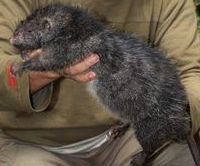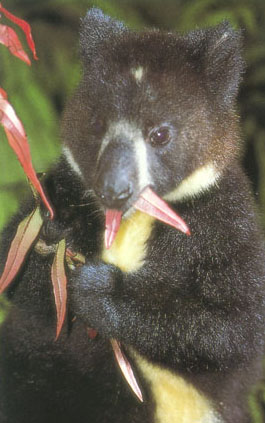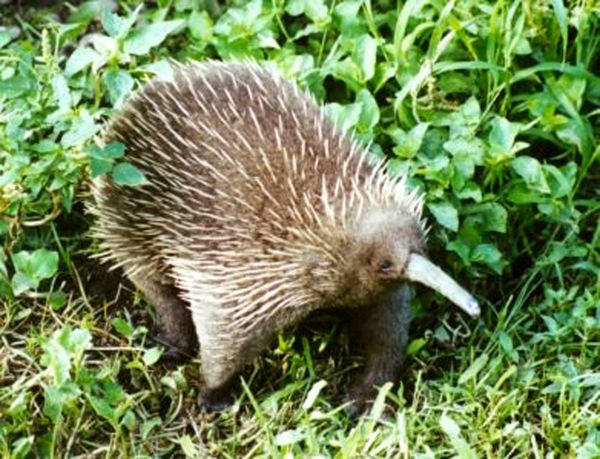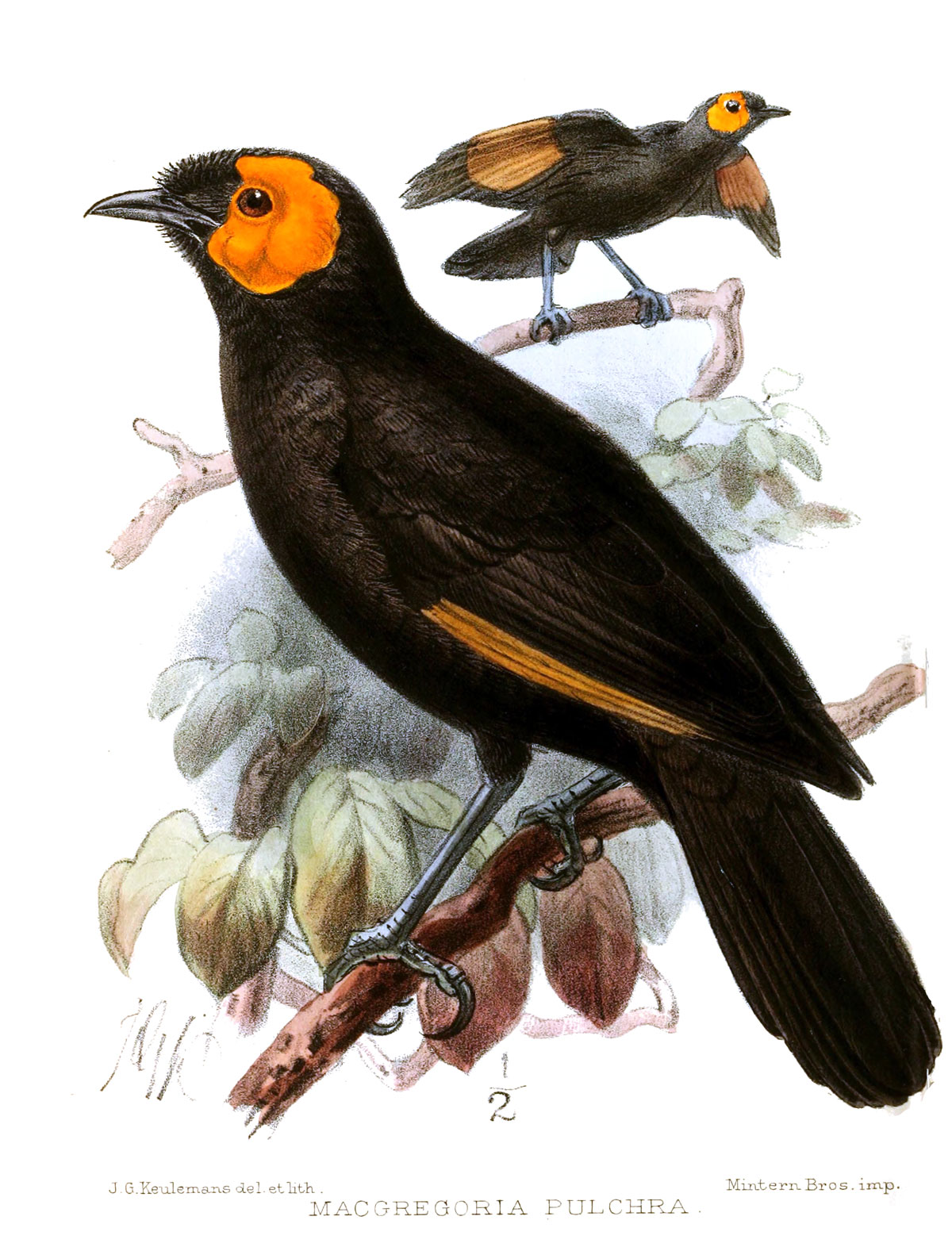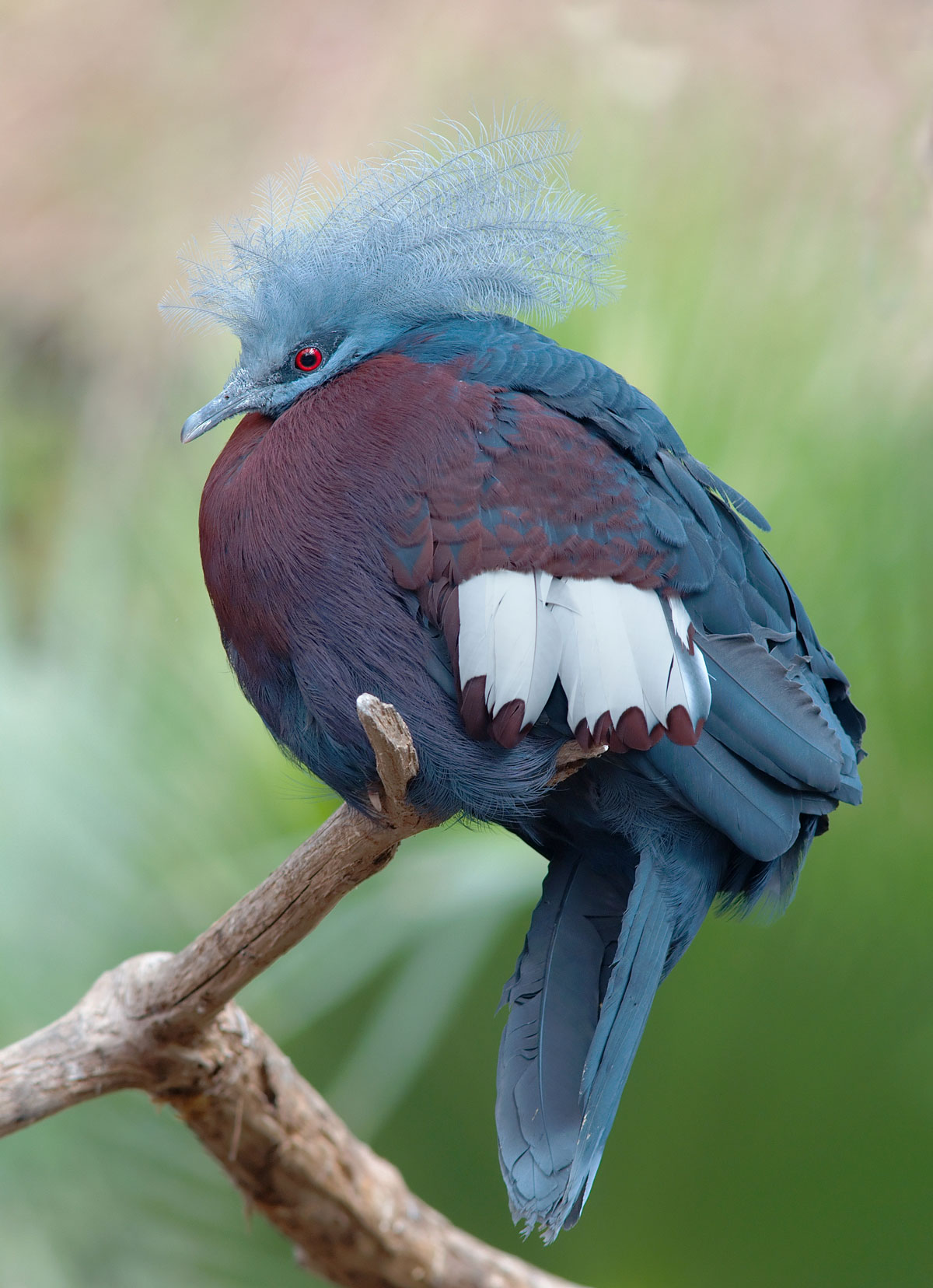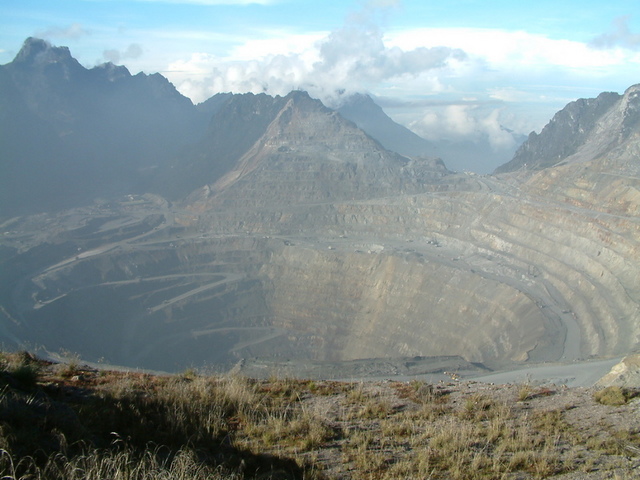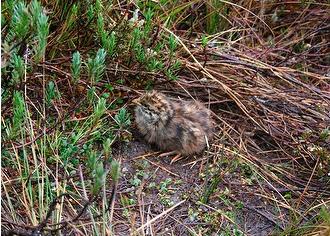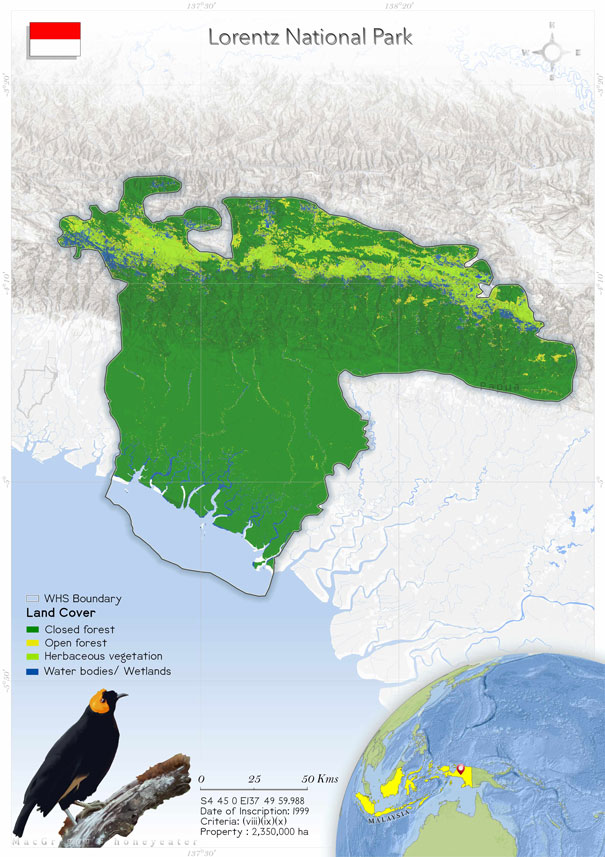
Lorentz National Park (955)
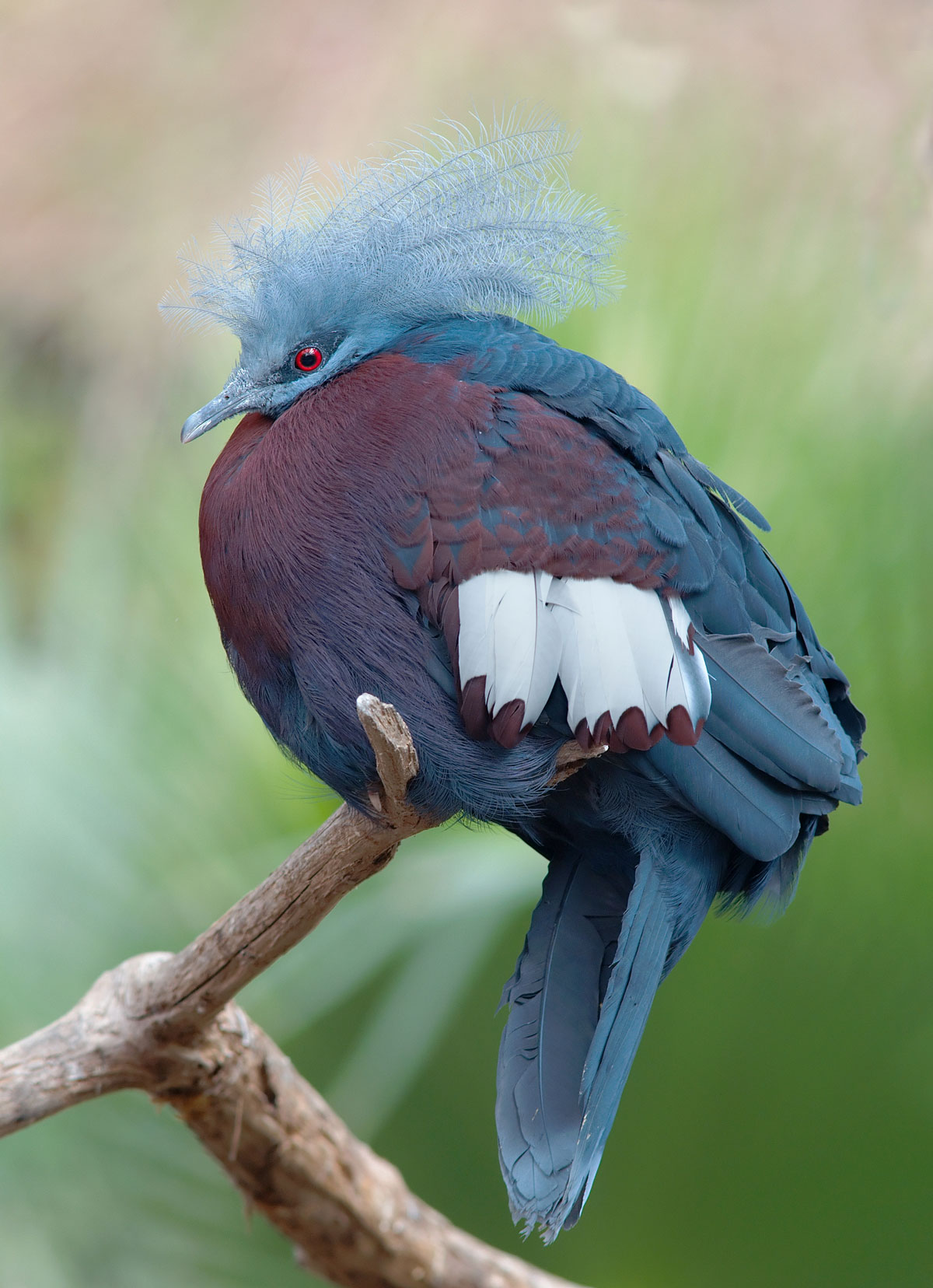 Lorentz National Park is the largest park in Southeast Asia, having an area of 2,350,000 ha. It is situated in Indonesia's Papua Province.This is the only protected area in the world that has ecosystems from snowcaps to the tropical marine environment, with significant lowland wetlands. The park is located at the meeting point of two colliding continental plates, and the area has a complex geology in which processes such as mountain formation and pronounced sculpting by glaciation take place regularly. The site is home to many endemic species, and fossils can also be found here. The vast property is of global significance because of the large tract of intact tropical forest. Thirty-four plant species and 123 mammal species recorded in the park. Two of the three monotreme species of the world, namely the short-beaked echidna and the long-beaked echidna, are found in the park. They are endemic to New Guinea. The park is managed under the Ministry of Forestry in Indonesia. The management plans have been made to deal with the current and future threats to the property. National, international and local stakeholders are contributing to the management of the park. No large-scale poaching was recorded when the SoC assessment was carried out. The building of the Habbema-Kenyan road has been a matter of contention. However, it is open for public use now. The site falls under the category of “Significant Concern” according to IUCN World Heritage Outlook, and the management needs to be upgraded.
Lorentz National Park is the largest park in Southeast Asia, having an area of 2,350,000 ha. It is situated in Indonesia's Papua Province.This is the only protected area in the world that has ecosystems from snowcaps to the tropical marine environment, with significant lowland wetlands. The park is located at the meeting point of two colliding continental plates, and the area has a complex geology in which processes such as mountain formation and pronounced sculpting by glaciation take place regularly. The site is home to many endemic species, and fossils can also be found here. The vast property is of global significance because of the large tract of intact tropical forest. Thirty-four plant species and 123 mammal species recorded in the park. Two of the three monotreme species of the world, namely the short-beaked echidna and the long-beaked echidna, are found in the park. They are endemic to New Guinea. The park is managed under the Ministry of Forestry in Indonesia. The management plans have been made to deal with the current and future threats to the property. National, international and local stakeholders are contributing to the management of the park. No large-scale poaching was recorded when the SoC assessment was carried out. The building of the Habbema-Kenyan road has been a matter of contention. However, it is open for public use now. The site falls under the category of “Significant Concern” according to IUCN World Heritage Outlook, and the management needs to be upgraded.
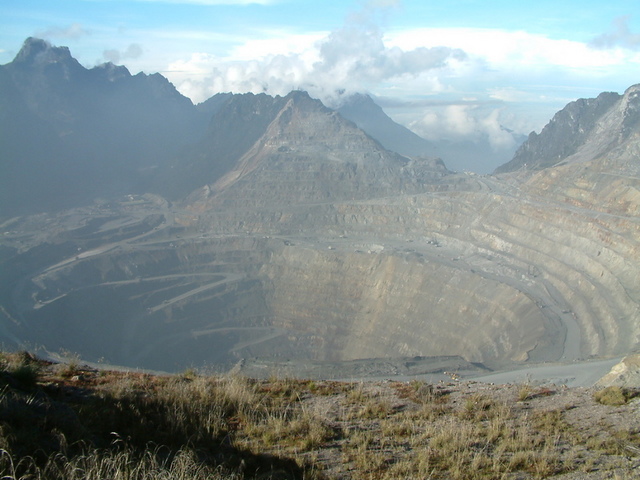 This property is the world’s last great wilderness, consisting of two biomes, which are the lowland and highland biomes (Claudino 2018). The park extends over around 150 km2 from Irian Jaya’s central cordillera, in the north, to the Arafura Sea, in the south. The park located in the Arafura Sea between New Guinea and Australia between 4º 00' and 5º 15' S and 137º 14' and 138º 20' E. The highest peak of the park is the summit of Puncak Jaya (also known as Mount Carstensz), 4884 m high. This is also the highest mountain in New Guinea and Indonesia. There are only three regions in the world where glaciers are found at equatorial latitudes— Lorentz National Park is one, with a summit of ice with an extent of 3 km2 . The Sudirman Range is a part of the park, with many streams and rivers that drain to the south of the coastal plain by cutting deep valleys in the mountain and foothills. Various swamps with many permanent and seasonal lakes are formed by these streams (UNESCO whc.unesco.org).
The vegetation in the park includes 34 different species, and there are 29 land systems present in the park. The wetlands are of five types in the coastal lowland: tidal swamps (0–1 m), beach (0–4m), meander belt (0–25 m), peat swamp (3–50 m) and alluvial fans (50–150 m). The beach vegetation ranges from pioneer herbaceous communities to the tall mixed and riparian forest upriver. The lowland montane rain forest, at 1000 m, is less rich in tree species than are the alluvial and hill forests, which are at 1000–3000 m. Plant species such as tree ferns are found at 3000–4000 m. Bogs, grasslands, and heath vegetation are present in this altitudinal range. At 4000 m, the alpine zone begins. The property is home to many animal species, including four lemur-like marsupial opossums (Hemibelideus spp.), five species of similar cuscus (Phalanger) species, two species of tree kangaroo (Dendrolagus), the New Guinea quoll (Dasyurus albopunctatus). There are 25 species of rat and mouse, and 19 species of bat have been recorded (World heritage datasheet). The park has a rich avifauna, consisting of 650 species. A total of 150,000 insect species have been found in the park. Apart from these, 324 species of reptile and 90 species of amphibian are found in the park. According to a recent study, three new bird species from the Arctiinae (Erebidae) group have been recorded in the park. These are Spilosoma renateae, Oeonosia lorentz and Cyana (Cryptanaema) habbema (Vos 2020).
This property is the world’s last great wilderness, consisting of two biomes, which are the lowland and highland biomes (Claudino 2018). The park extends over around 150 km2 from Irian Jaya’s central cordillera, in the north, to the Arafura Sea, in the south. The park located in the Arafura Sea between New Guinea and Australia between 4º 00' and 5º 15' S and 137º 14' and 138º 20' E. The highest peak of the park is the summit of Puncak Jaya (also known as Mount Carstensz), 4884 m high. This is also the highest mountain in New Guinea and Indonesia. There are only three regions in the world where glaciers are found at equatorial latitudes— Lorentz National Park is one, with a summit of ice with an extent of 3 km2 . The Sudirman Range is a part of the park, with many streams and rivers that drain to the south of the coastal plain by cutting deep valleys in the mountain and foothills. Various swamps with many permanent and seasonal lakes are formed by these streams (UNESCO whc.unesco.org).
The vegetation in the park includes 34 different species, and there are 29 land systems present in the park. The wetlands are of five types in the coastal lowland: tidal swamps (0–1 m), beach (0–4m), meander belt (0–25 m), peat swamp (3–50 m) and alluvial fans (50–150 m). The beach vegetation ranges from pioneer herbaceous communities to the tall mixed and riparian forest upriver. The lowland montane rain forest, at 1000 m, is less rich in tree species than are the alluvial and hill forests, which are at 1000–3000 m. Plant species such as tree ferns are found at 3000–4000 m. Bogs, grasslands, and heath vegetation are present in this altitudinal range. At 4000 m, the alpine zone begins. The property is home to many animal species, including four lemur-like marsupial opossums (Hemibelideus spp.), five species of similar cuscus (Phalanger) species, two species of tree kangaroo (Dendrolagus), the New Guinea quoll (Dasyurus albopunctatus). There are 25 species of rat and mouse, and 19 species of bat have been recorded (World heritage datasheet). The park has a rich avifauna, consisting of 650 species. A total of 150,000 insect species have been found in the park. Apart from these, 324 species of reptile and 90 species of amphibian are found in the park. According to a recent study, three new bird species from the Arctiinae (Erebidae) group have been recorded in the park. These are Spilosoma renateae, Oeonosia lorentz and Cyana (Cryptanaema) habbema (Vos 2020).
Criterion (vii)
 The geology and landforms of Lorentz National Park display graphic evidence of earths’ history. Located at the meeting point of two colliding continental plates, the area has a complex geology with ongoing mountain formation as well as major sculpting by glaciation and shoreline accretion. The dominating mountain range is a direct product of the collision between the Australian and Pacific tectonic plates and the property contains the highest points of the mountains of Papua New Guinea and the only remaining glaciers on the island. There is also clear evidence of post glacial shorelines.
Graphically illustrating the geomorphological effect of the last glacial and post-glacial periods, the mountains show all the classical glacial landforms including lakes and moraines. Furthermore, there are five small remnant glaciers. While all five glaciers are retreating rapidly under present climatic conditions, no other tropical glacier fields in the world exhibit glacial evolution as well as those in Lorentz National Park. There is also no better example in the world of the combined effect of collision of tectonic plates and the secondary major sculpting by glacial and post-glacial events
The geology and landforms of Lorentz National Park display graphic evidence of earths’ history. Located at the meeting point of two colliding continental plates, the area has a complex geology with ongoing mountain formation as well as major sculpting by glaciation and shoreline accretion. The dominating mountain range is a direct product of the collision between the Australian and Pacific tectonic plates and the property contains the highest points of the mountains of Papua New Guinea and the only remaining glaciers on the island. There is also clear evidence of post glacial shorelines.
Graphically illustrating the geomorphological effect of the last glacial and post-glacial periods, the mountains show all the classical glacial landforms including lakes and moraines. Furthermore, there are five small remnant glaciers. While all five glaciers are retreating rapidly under present climatic conditions, no other tropical glacier fields in the world exhibit glacial evolution as well as those in Lorentz National Park. There is also no better example in the world of the combined effect of collision of tectonic plates and the secondary major sculpting by glacial and post-glacial events
Criterion (x)
Lorentz National Park is the only protected area in the world that incorporates a continous ecological transect from snowcapped mountain peaks to a tropical marine environment, including extensive lowland wetlands. The geophysical processes and high rainfall found along this transect are consistent with the development of significant on-going ecological processes as is the division of the property into two distinct zones: the swampy lowlands and the high mountain area of the central cordillera. The climatic gradient, the greatest throughout the island of New Guinea and the entire Australian tectonic region, extends from nival zones and glaciers to lowland equatorial zones with an associated extreme range of faunal and floral species and communities. Lorentz National Park provides evidence of highly developed endemism in both plants and animals, especially for the higher altitudes of the mountains, as expected in a region combining on-going uplift and climatic warming.
Criterion (x)
The mountain building processes that have occurred over time have provided temperate refuges in the tropics for ancient Gondwanan plant species during the climatic warming that has occurred since the last ice age. For example, Lorentz National Park’s Nothofagus beech forests are well represented, although their closest relatives are otherwise confined to the cool temperate regions of south-eastern Australia, New Zealand and the southern Andes. The property is more than just the habitat for many rare, endemic and restricted range species. Its large size and exceptional natural integrity makes it especially important for their on-going evolution as well as thier long term conservation. The property covers substantial areas of two identified Endemic Bird Areas (EBAs) with a total of 45 restricted range birds and nine endemic species. Two of the restricted range bird species, Archbold’s bowerbird (Archboldia papuensis), and MacGregor’s bird-of-paradise (Macgregoria pulchra), are considered rare and vulnerable. Mammals recorded within the property include two of the world’s three monotremes; the short-beaked echidna (Tachyglossus aculeatus), and the long-beaked echidna (Zaglossus bruijinii) a New Guinea endemic. Lorentz National Park will become increasingly important for long term conservation of the species already recorded and the many that remain to be discovered.
Status
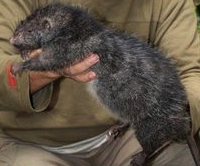 Lorentz National Park is managed under the authority of the Directorate General of Forest Protection and Nature Conservation, Ministry of Forestry, Republic of Indonesia. The property was first given formal protection in 1919 by the Dutch Colonial Government, but this protection was removed because of a conflict between local people. It was declared a Strict Nature Reserve in 1978. In 1984 it was designated an ASEAN Heritage Park. The property then was declared a national park by the Ministry of Forestry, in 1997 (World Heritage Datasheet; UNESCO whc.unesco.org). The park has an active strategic plan, a long-term management plan and a zoning system that is under development, with all the stakeholders involved.
The park’s long-term management is responsible for monitoring current and future threats and the inception of new districts and road development in the property. Regular patrolling is being carried out in the park to keep an eye on illegal activities. Despite having limited technical and financial resources, the park management can regulate it. Friends of Lorentz is an initiative launched by national and international partners that provide long-term financial and technical assistance and build capacity to manage the property effectively (UNESCO whc.unesco.org).
The park has a very low human population density, due to which the various ecosystems of the park are intact. The current threats, such as illegal logging and wildlife hunting, are not critical and can be managed. However, more information is required on the poaching in the property. According to the assessment carried out by IUCN Outlook, hunting, trapping and poaching are causing severe damage to the property. Species such as Boelen’s python are poached for the pet trade, and other species of reptile, mammals and birds are also hunted and poached. The construction of the Wamena– Habema–Kenyam road has always been a matter of dispute and represents a serious threat to the property. There are also cases of introduction of alien species, which have harmed the park’s biodiversity. For example, an exotic fish, a Tilapia species, was introduced in the Habema park, and as a result, some native fishes and crustaceans disappeared from the lake. The park also faces a risk of melting glaciers due to the impacts of climate change (IUCN World Heritage Outlook 2020). Mining activities, petroleum exploration, proposed road constructions and illegal logging also damage the park (World Heritage Nomination 1999).
The State of Conservation reports are frequently submitted to the World Heritage Committee and advisory body by the state body, and the recommended actions have been taken and reported on. According to the State of Conservation report 2019, as recommended by the World Heritage Committee and advisory body in SoC 2017, the property is under continuous SMART patrolling since 2016, and it covered a total area of 600,000 ha during 2016–2018; however, patrolling can only be carried out in the lowlands because of the rugged terrain. No large-scale poaching has been reported in the area; only small-scale hunting indulged in by local communities for traditional and cultural ceremonies has been noted. This hunting is permitted only in the traditional zone as allotted in the new zoning of the property. The committee and advisory body recommended carrying out research on Nothofagus die-back in SoC 2017. The suggested action was taken, and monitoring of Nothofagus species is being carried out along the road between Wamena and Habbema since 2017. The construction of the Habbema– Kenyam road has been a controversial issue. The committee suggested that the State Party summon the IUCN Reactive Monitoring mission to the property so that it can be assessed whether the road construction is impacting the OUV. Due to the regional and national elections in 2018 and 2019, respectively, the IUCN Reactive Monitoring Mission of the property could not be carried out; however, the State Party has summoned the mission after the election in mid-2019. However, the Habbema-Kenyam road has been completed and opened for public use (State of Conservation Report 2019).
Lorentz National Park is managed under the authority of the Directorate General of Forest Protection and Nature Conservation, Ministry of Forestry, Republic of Indonesia. The property was first given formal protection in 1919 by the Dutch Colonial Government, but this protection was removed because of a conflict between local people. It was declared a Strict Nature Reserve in 1978. In 1984 it was designated an ASEAN Heritage Park. The property then was declared a national park by the Ministry of Forestry, in 1997 (World Heritage Datasheet; UNESCO whc.unesco.org). The park has an active strategic plan, a long-term management plan and a zoning system that is under development, with all the stakeholders involved.
The park’s long-term management is responsible for monitoring current and future threats and the inception of new districts and road development in the property. Regular patrolling is being carried out in the park to keep an eye on illegal activities. Despite having limited technical and financial resources, the park management can regulate it. Friends of Lorentz is an initiative launched by national and international partners that provide long-term financial and technical assistance and build capacity to manage the property effectively (UNESCO whc.unesco.org).
The park has a very low human population density, due to which the various ecosystems of the park are intact. The current threats, such as illegal logging and wildlife hunting, are not critical and can be managed. However, more information is required on the poaching in the property. According to the assessment carried out by IUCN Outlook, hunting, trapping and poaching are causing severe damage to the property. Species such as Boelen’s python are poached for the pet trade, and other species of reptile, mammals and birds are also hunted and poached. The construction of the Wamena– Habema–Kenyam road has always been a matter of dispute and represents a serious threat to the property. There are also cases of introduction of alien species, which have harmed the park’s biodiversity. For example, an exotic fish, a Tilapia species, was introduced in the Habema park, and as a result, some native fishes and crustaceans disappeared from the lake. The park also faces a risk of melting glaciers due to the impacts of climate change (IUCN World Heritage Outlook 2020). Mining activities, petroleum exploration, proposed road constructions and illegal logging also damage the park (World Heritage Nomination 1999).
The State of Conservation reports are frequently submitted to the World Heritage Committee and advisory body by the state body, and the recommended actions have been taken and reported on. According to the State of Conservation report 2019, as recommended by the World Heritage Committee and advisory body in SoC 2017, the property is under continuous SMART patrolling since 2016, and it covered a total area of 600,000 ha during 2016–2018; however, patrolling can only be carried out in the lowlands because of the rugged terrain. No large-scale poaching has been reported in the area; only small-scale hunting indulged in by local communities for traditional and cultural ceremonies has been noted. This hunting is permitted only in the traditional zone as allotted in the new zoning of the property. The committee and advisory body recommended carrying out research on Nothofagus die-back in SoC 2017. The suggested action was taken, and monitoring of Nothofagus species is being carried out along the road between Wamena and Habbema since 2017. The construction of the Habbema– Kenyam road has been a controversial issue. The committee suggested that the State Party summon the IUCN Reactive Monitoring mission to the property so that it can be assessed whether the road construction is impacting the OUV. Due to the regional and national elections in 2018 and 2019, respectively, the IUCN Reactive Monitoring Mission of the property could not be carried out; however, the State Party has summoned the mission after the election in mid-2019. However, the Habbema-Kenyam road has been completed and opened for public use (State of Conservation Report 2019).
